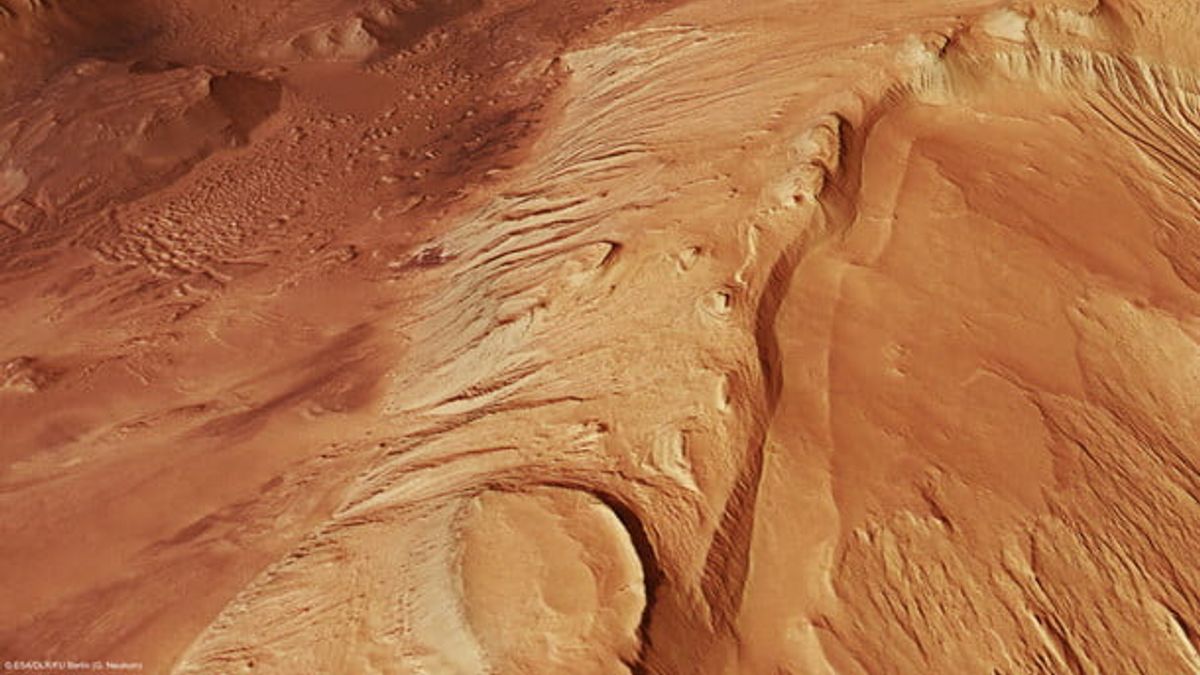JAKARTA - Mars is thought to have had a lot of water billions of years ago on its surface, it may even have looked like Earth, has countless sources of water.
As is well known Mars looks dry and arid with almost no water that can be obtained from the planet. And of course, it's a challenge to send crewed missions there someday.
However, a recent study has revealed a lot of water beneath the Martian surface in the Valles Marineris canyon system. The water was detected by the European Space Agency's (ESA) Trace Gas Orbiter (TGO) using the Fine Resolution Epithermal Neutron Detector (FREND).
Previously, TGO had found water ice on the Red Planet, especially around the poles and beneath its surface, there was little water easily accessible in the middle latitude region. Hence why this discovery is so important.
"With TGO we can look down to one meter below this dusty layer and see what's really going on beneath the Martian surface and, most importantly, find water-rich oases that could not be detected with previous instruments", said the lead author of the new study, Igor Mitrofanov as quoted by Digital Trends, Monday, December 20.
"FREND revealed an area of unusually large amounts of hydrogen in the colossal Valles Marineris canyon system, assuming the hydrogen we see is bound to water molecules, as much as 40 percent of the near-surface material in this region appears to be water."
In this latest study, the canyon system, which is located near the equator, has been found to contain a large amount of water and has the potential to become ice or bond to other minerals in the soil. On both conjectures, it could be a huge potential resource for future Mars explorers to exploit.
SEE ALSO:
Gathering more knowledge about the current conditions on Mars could help researchers to understand more about the planet's history as well.
“Knowing more about how and where water exists on Mars today is critical to understanding what happened to the once abundant Martian water, and helping us search for habitable environments, possible signs of past life, and organic material from the early days of Mars", said Colin Wilson, ESA's ExoMars Trace Gas Orbiter project scientist.
The English, Chinese, Japanese, Arabic, and French versions are automatically generated by the AI. So there may still be inaccuracies in translating, please always see Indonesian as our main language. (system supported by DigitalSiber.id)


















